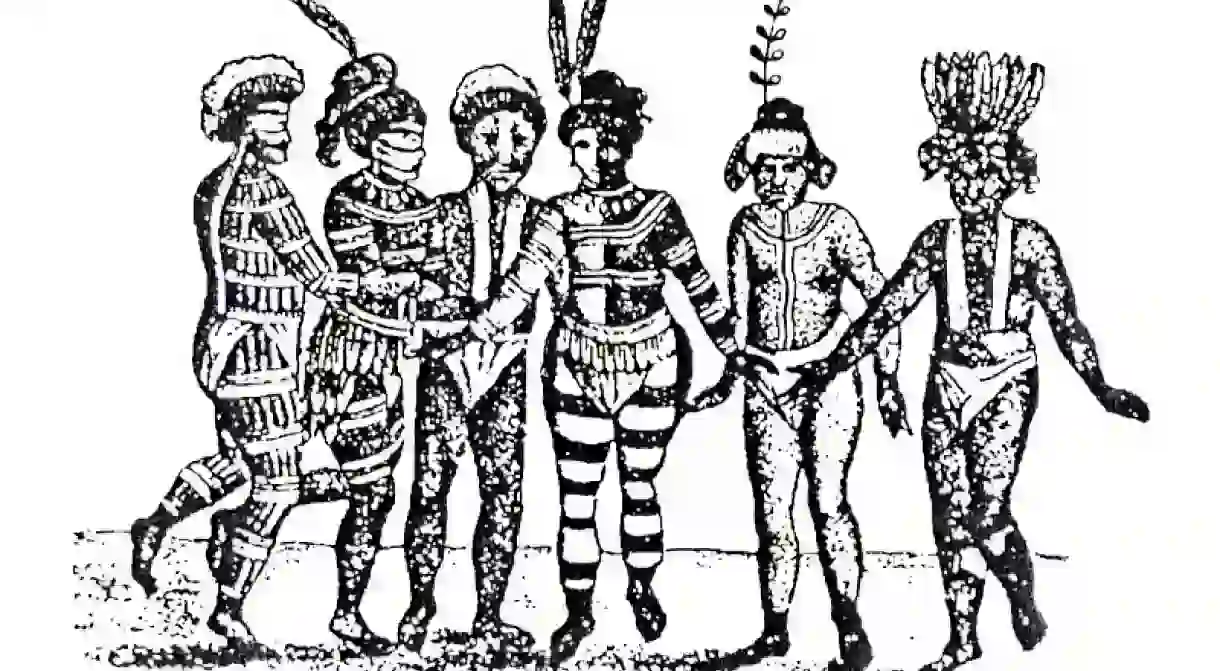A Brief History Of The Muwekma Ohlone People

‘Makkin Mak Muwekma Wolwoolum, ‘Akkoy Mak-Warep, Manne Mak Hiswi!’
‘We Are Muwekma Ohlone, Welcome To Our Land, Where We Are Born’
One of the most unfortunate aspects of the American status quo is the constant ignorance about the people who lived in North America before western settlers crossed the Atlantic Ocean. The native tribes that inhabited America before Europeans were incredibly diverse and included the Muwekma Ohlone people who were the original residents of the Bay Area. In this article we will briefly outline the history of the Ohlone people and attempt to understand who they were as a collective people.
The Various Tribes
One of the most damaging myths that has somehow survived into the 21st century is the false belief that all Native Americans were one giant ‘uncultured’ group. In fact, there are 562 federally recognized Indian tribes, bands, nations, pueblos, rancherias, communities and Native villages in the United States. As well, this number doesn’t account for smaller tribes that still push for recognition from the federal government. The collective Ohlone people, who were also referred to as the Costanoan people, were in fact around 50 separate tribes with different languages that were collectively put under the greater Ohlone label when they were colonized by Spanish settlers. This family of tribes lived in the Bay Area for over 10,000 years and never actually viewed themselves as one district group.

The Muewkma Ohlone people inhabited the lands from the San Francisco Bay to the lower Salinas Valley. In San Francisco, there were villages located at today’s Fort Mason, Crissy Field, and Sutro Baths. The groups freely interacted with one another and usually moved annually between temporary and permanent village sites in a seasonal round of hunting, fishing, and gathering. They also used the practice of periodic burning of the landscape to promote the growth of native grasses for seed gathering and to create forage areas for deer and elk. Some of the closest neighboring tribes were the Coast Miwok people who inhabited both Marin and Sonoma country to the north.
Day To Day
Each of the 50 or so tribes had around 50 to 500 members and the groups often used inter-tribal marriage to strengthen tribal bonds. The average Ohlone Indian survived off of a diet that mostly consisted of crushed acorns, nuts, grass seed, berries and trapped fish or game. Most of the tribes built dome-shaped houses of woven or bundled mats of tule (Schoenoplectus acutus or common tule). The groups also crafted boats of tule which they used to navigate the various waterways around the bay. Most of the tribes were believed to have practiced some form of the Northern California Kuksu religion, which often featured rites of passages and village medicine men.
The Missions
The major change for the Muwekma Ohlone people came when the Spanish colonized the Bay Area. Although records are scarce, we know that some Ohlone people willingly converted but a sizable majority were forced to convert. The Spanish created a powerful mission system based around Mission San Francisco De Asis (Mission Dolores) and used the native Ohlone people as manual labor. The Missions were extremely strict and once a native was baptized they were essentially property of the church and couldn’t leave the mission without explicit permission. The Missions essentially destroyed the native peoples culture and turned them into slaves who were at the mercy of the Spanish colonizers. If you’d like to read more about the missions, feel free to read our article outlining the history of the Mission Dolores.

The Tribe Today
Tragically, the Ohlone people were nearly wiped out from disease, warfare and colonization from European immigrants. In the 20th century the tribes finally rallied against the federal government and struggled for years to gain basic recognition. The federal government continued to disenfranchise and demoralize the tribe with acts intended to culturally and physically destroy them. A prime example occurred in the 1950s when the Ohlone tribal council supposedly received $150 dollars for the value of 8.5 million acres of land from the federal government. And it wasn’t until 1996 that the group was somewhat recognized in a ‘previous unambiguous federal recognition’ which granted them some rights as an American tribe.
Today, there are small segments of the Ohlone people that still live in the Bay Area and continue to fight to keep their culture alive. Most of the tribes continue to preserve and revitalize their cultural history through education, restoration of their native languages, and the practice of cultural storytelling.













